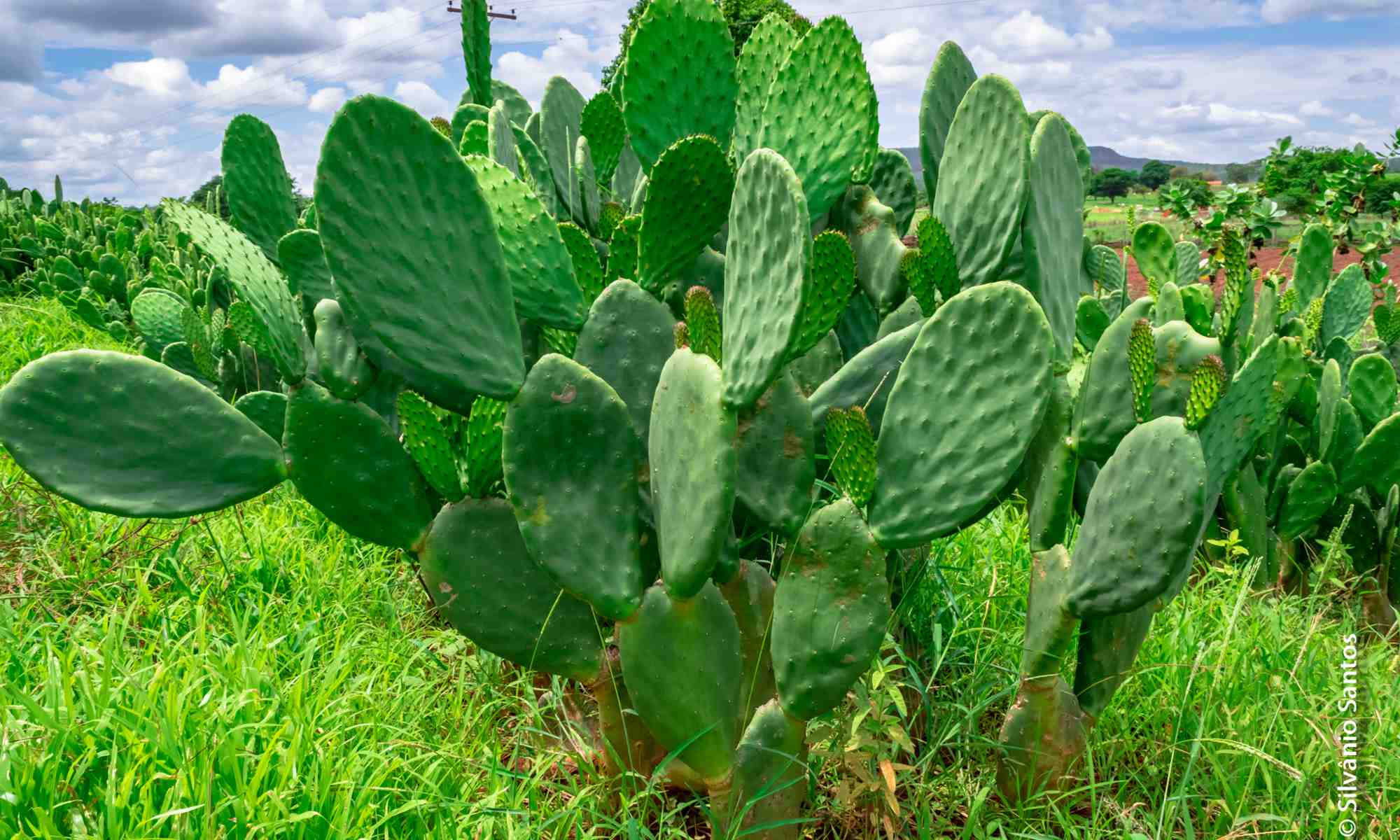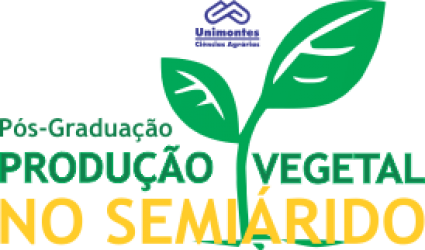- Version
- Download 2
- Tamanho do Arquivo 485.34 KB
- Data de Criação 14/06/2021
- Download
MOTA FILHO, Virgílio Jamir Gonçalves. Reguladores de crescimento e intensidade de poda na cultura da atemoieira. 2009. 70 p. Dissertação (Mestrado em Produção Vegetal no Semiárido) – Universidade Estadual de Montes Claros, Janaúba, 2009.
A atemoieira é um híbrido interespecífico proveniente do cruzamento da pinha com a cherimoia. É uma fruta saborosa, mas apresenta desvantagem em virtude do considerável número de sementes no fruto. Atualmente os produtores vêm adequando o manejo cultural nas espécies frutíferas visando atender as exigências dos consumidores. Dentre as práticas de manejo destacamos a poda, responsável pela indução floral e programação da colheita. O presente trabalho teve como objetivos avaliar características vegetativas e reprodutivas da atemoieira submetida a diferentes comprimentos de ramos na época da poda de produção, e avaliar o pegamento de frutos de atemoieira com o uso de reguladores de crescimento na região norte de Minas Gerais. O trabalho foi conduzido no município de Matias Cardoso, norte de Minas Gerais. Foram instalados 3 experimentos com reguladores de crescimento. O primeiro experimento avaliou quatro tipos de auxinas, o Ácido Indol Butírico (AIB), Ácido Indol Acético (AIA), Ácido Naphtaleno Acético (ANA) e ácido diclorofenoxiacético (2,4D) combinados com três concentrações (150, 300 e 450 mg L-1 ). O ácido giberélico (GA 3 ) também foi utilizado na dosagem de 1 g L-1 , em duas aplicações, aos 14 e 21 dias após a primeira aplicação das auxinas. O 2º experimento testou o AIA, AIB e ANA combinados com duas concentrações (450 e 600 mg L-1 ). Já o 3º experimento avaliou o ANA 450 mg L-1 associados com número de aplicações: semanal até 35 dias; semanal até 70 dias; semanal até 105 dias e a cada 2 semanas. O GA 3 foi utilizado na dosagem de 1 g L-1 , em quatro aplicações, aos 13, 27, 41 e 54 dias após a primeira aplicação da auxina. Em todos os experimentos, a testemunha foi à polinização artificial. A porcentagem de pegamento dos frutos foi submetida ao ajustamento de regressão com modelos não lineares. No trabalho com poda foram selecionadas 20 plantas e testados cinco tratamentos, compostos por ramos podados com 10, 20, 30, 40 e 50 cm de comprimento. Foram avaliadas as características como: número de flores, comprimento e diâmetro de ramos brotados, diâmetro da copa e altura da planta, número de frutos na pré colheita e colheita, peso total de frutos, peso médio de frutos, diâmetro dos frutos, comprimento dos frutos, peso da casca dos frutos, peso de polpa e semente dos frutos, teor de sólido solúveis totais, acidez total titulável e pH. As características avaliadas foram submetidas a análise de variância, tendo os efeitos dos diferentes comprimentos de ramos podados testados e ajustados em equação de regressão. O ANA foi a auxina sintética que apresentou as maiores médias de pegamento dos frutos, com 100% na dosagem de 450 mg L-1 no primeiro experimento e 83% no segundo experimento, ao 11° e 10° dia da primeira aplicação, respectivamente. Os frutos de atemoia persistiram na planta por 68 dias no experimento 1 e 136 dias no experimento 2 tratados com ANA na dose 450 mg L-1 . No terceiro experimento, o tratamento semanal de ANA até 35 dias apresentou maior porcentagem de pegamento dos frutos, com 8% aos 144 dias da primeira aplicação. A utilização de 2,4 D apresentou as menores porcentagens de pegamento dos frutos. Nenhum regulador de crescimento proporcionou a produção de frutos de atemoia ‘Gefner’. Foi observado redução linear no número de flores, comprimento e diâmetro de ramos brotados (P<0,05) com o aumento no comprimento dos ramos podados. Para as características altura e diâmetro da copa das plantas, produção e característica química ou física dos frutos não houve influência significativa (P<0,05) do comprimento dos ramos podados em atemoieira ‘Gefner’.
Growth regulators and intensity of pruning on the atemoya tree
The atemoya tree is an interspecific hybrid from the crossing of custard apple with cherimoya. It is a flavorful fruit, but it presents disadvantage due to considerable number of seeds in the fruit. Currently the producers come adjusting the cultural handling in the fruit tree species seeking to satisfy consumers’ requirements. Amongst the handling practices, the pruning it is stood out, responsible for the flower induction and programming of the harvest. The present work aimed to evaluate vegetative and reproductive characteristics of the atemoya submitted the different lengths of branches in the production pruning, and to evaluate the set of atemoya fruits with the use of growth regulators in the North of Minas Gerais. The study was carried out in Matias Cardoso county, north of Minas Gerais. Three experiments with growth regulators were installed. In the first experiment were evaluated four types of auxins, Indol-Butyric Acid (IBA), Indol-Acetic Acid (IAA), Naphthaleneacetic Acid (NAA) and dichlorophenoxyacetic acid (2,4D) combined with three concentrations (150, 300 and 450 mg. L -1 ). The giberellic acid (GA3) also was used in the dosage of 1 g.L-1, in two applications, to 14 and 21 days after the first application of the auxins. In the second one were tested IAA, IBA and NAA combined with two concentrations (450 and 600 mg. L -1 ). In the third one was evaluated NAA 450 mg. L -1 associated with number of applications: weekly up to 35 days; weekly up to 70 days; weekly up to 105 days and to each 2 weeks. The GA3 was used in the dosage of 1 g L-1 , four applications, to 13, 27, 41 and 54 days after the first auxin application. In all experiments, the control was the artificial pollination. The percentage of fruit set was submitted to the regression adjustment with not linear models. In the work with pruning, 20 plants were selected and tested five treatments, compoud of pruned branches with 10, 20, 30, 40 and 50 cm. The evaluated characteristics were: flowers number, length and diameter of sprouted branches, crown diameter and plant height, fruit number in the pre-harvest and harvest, total weight of fruits, average weight of fruits, diameter of the fruits, length of the fruits, weight of the fruits peel, weight of pulp and fruits seed, total soluble solid content, total titratable acidity and pH. The evaluated characteristics were submitted the variance analysis, having the effect of the different lengths of pruned branches tested and adjusted in regression equation. The NAA was the synthetic auxin that presented the greater averages of fruit set, with 100% in the dosage of 450 mg. L-1 in first experiment and 83% in the second one, to 11 and 10 days after the first application, respectively. The atemoya fruits lasted on the plant per 68 days in the first experiment and 136 days in the second one treated with NAA in the 450 mg. L -1 dose. In the third experiment, the weekly treatment of NAA up to 35 days presented greater percentage of fruit set, with 8% to 144 days from the first application. The use of 2,4 D presented the lesser percentages of fruit set. None of the growth regulators provides production of atemoya `Gefner' fruits. It was observed linear reduction in the flowers number, length and diameter of sprouted branches (P<0,05) with increase in the length of the pruned branches. For the characteristics height and diameter plants’ crown, production and chemical or physical characteristic of the fruits, there was no significant influence (P<0,05) of the pruned branches in atemoya ‘Gefner’.

